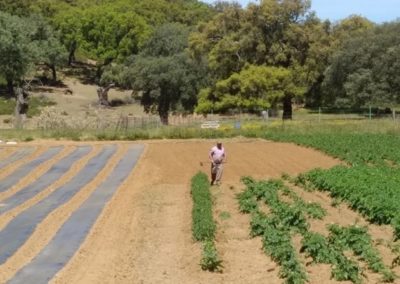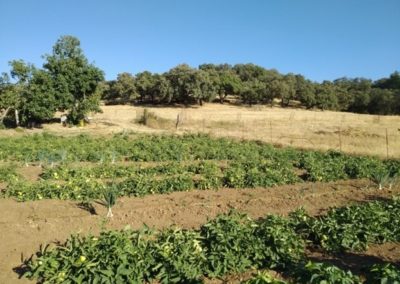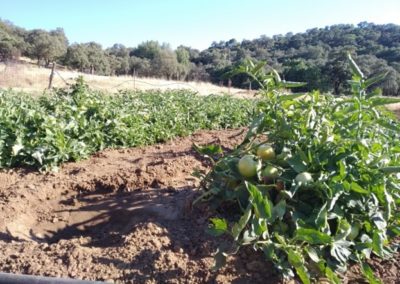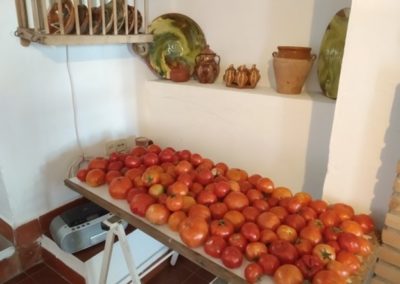Self-consumption vegetable gardens in Sierra de Huelva
DOI: 10.5281/zenodo.7607978
Mountain and Upland Model
Author:Miguel García Martín
Overview of SAMUTER
Self-consumption horticulture in the Sierra de Huelva is a unique and relatively marginal agro-territorial system in an area dominated by the extensive silvopastoral exploitation of the dehesa. Small in size and scattered throughout the Sierra Morena of Huelva, the market gardens are a non-commercial model of exploitation, oriented towards the complementary food supply of the local landowning population, with a highly seasonal rhythm (especially in summer) and an eminently horticultural production. In fact, some products, such as tomatoes, transcend their strict food functions to become icons of farms with important heritage and socio-cultural values.
1. Environmental sustainability
Coherence with agro-ecological potential and good agricultural and livestock practices (sustainability and know-how; not necessarily organic farming) and/or Inclusion in ENP, Natura 2000 Network, Biosphere Reserve, SAVN, SIPAN, others.
The orchards are located in a spatial area, the Sierra Morena of Huelva, which broadly coincides with the boundaries of the Sierra de Aracena y Picos de Aroche Natural Park (also SCI, SPA and part of the Dehesas de Sierra Morena Biosphere Reserve). As a spatially marginal exploitation system, and very much oriented towards unregulated domestic consumption, it has little impact on the natural environment. Good agri-environmental practices, without being expressly certified, are clearly evident in the low use of chemical inputs, integrated production, harmonisation with other livestock farming activities, use of native seeds and varieties, etc.
2. Territoriality and agri-environmental policies
Designations of Origin, geographical designations and other territorial trademarks. Agri-environmental areas/agro-systems.
The exploitation of these orchards represents an agricultural activity that is in many cases unregulated. As they are small plots integrated into larger agricultural and livestock farms, production is outside administrative control, so they are not usually direct recipients of aid or specific management measures, although the rest of the activities associated with farms are included in the territorial brands of the area, dominated by Iberian pork products, cheeses, cork, etc.
3. Relations between production, processing, marketing and consumption
Proximity relations and forms of integration between agri-food production and processing industry; distribution networks, short circuits and consumption groups (especially in metropolitan areas and urban regions; “supply basins”).
The distribution networks and distribution basins (foodshed ) are short and very short-lived, although the social and cultural impact can cross the limits of the area: the products of the huerta serrana are appreciated and valued as icons of traditional culture among urban consumers in nearby urban agglomerations, although there are no consistent distribution and marketing channels as such. It is more a symbolic projection of the products of the Huelva market garden. On the other hand, some transformation processes, such as bottling, are also associated with a powerful symbolic and cultural charge, as a social practice that brings together neighbours, traditions, customs and community rituals.
4. Good governance
Participation and involvement of actors in the agri-food system. Councils and other institutions for participation and management in DOs, DGs and other territorial brands; entities for participation and management of protected areas in relation to agricultural activities; agricultural associations, Local Development Groups and similar. Agri-food groups, consumer groups and networks, etc.
As mentioned above, the absence of regulatory and administrative mechanisms to regulate these horticultural farms makes them territorial systems “on the margins”. The owners are either part-time market gardeners or active livestock farmers whose main occupation is in other segments of agricultural activity (mainly extensive Iberian pigs, sheep or goats). Collaborative networks are established more through local cultural management: product samples, gastronomic events, landscape and cultural itineraries, competitions, etc.






Recent Comments